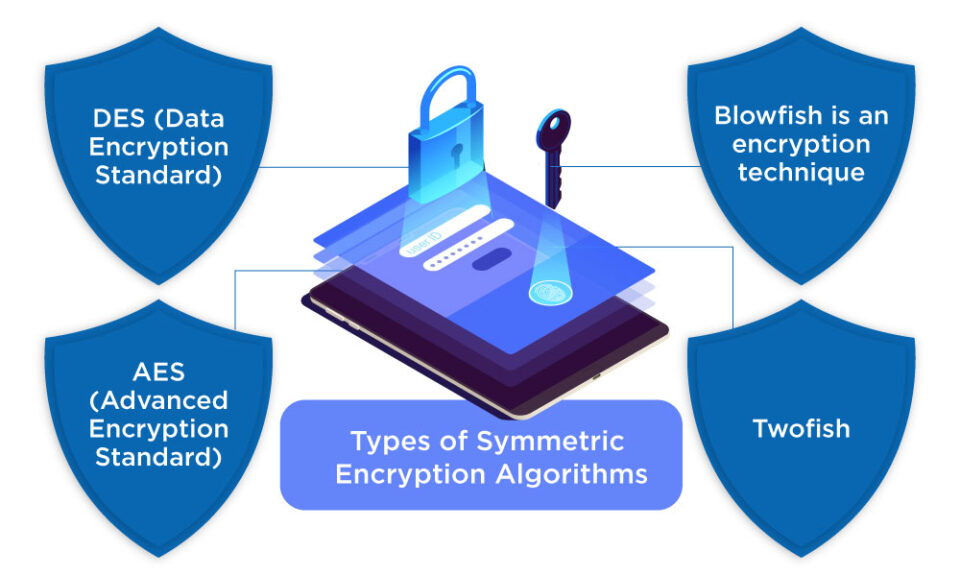In today’s digital world, security has become a matter of concern. It’s a two-way sword: online business growth on one side and security/cyberattacks on the other.
Encryption is a highly effective security method that helps protect your sensitive information from being compromised or stolen. It is the process of hiding sensitive data from unauthorized users by converting readable plaintext into unreadable ciphertext.
Encryption comes in two types:
- Symmetric Encryption
- Asymmetric Encryption
In this blog, we’ll focus on symmetric encryption, covering its types, benefits, applications, and more.
Understanding Symmetric Encryption
Symmetric encryption is a method that uses only a single secret key to encrypt and decrypt the data. In this method, both the sender and the receiver must have the secret key that will be used to convert cipher text into plain text and vice versa.
Thus, it’s shared between the sender and the receiver, ensuring only authorized users can access it. It is used to process high volumes of data, as it's faster and more efficient. However, it poses a security challenge when sharing the actual encrypted data. Thus, in most scenarios, symmetric encryption is combined with asymmetric encryption.
For example,
Secret Key: 4567
Plain Text: Synonym
Cyphertext: TYui#zD Now, key 4567 is used to decrypt the cyphertext back to plain “Synonym” text.
How Does Symmetric Encryption Work?
Key Generation
A random secret key is generated. It can be a series of characters, symbols, or numbers. The sender and receiver share this key to hide the data, and it must be kept confidential.
Encryption
The sender uses the secret key to encrypt the plaintext into ciphertext (unreadable data). This is done using mathematical operations such as permutation, substitution, and more. The encrypted data is then sent to the receiver.
Decryption
The receiver also has access to the secret key, which is then used to decrypt the cyphertext back into plain text.
Types of Symmetric Encryption Algorithms:
Let’s explore different types of algorithms,

DES (Data Encryption Standard): The DES algorithm was used widely in the past but is now considered compromised in terms of security due to its short length (56 bits).
AES (Advanced Encryption Standard): AES is a popular, secure, and efficient encryption algorithm. It comes in formats such as (128, 192, and 256 bits).
Blowfish is an encryption technique: First developed by Bruce Schneier in 1993. Due to its speed and efficiency, this algorithm is mainly used in software applications.
Twofish: Twofish is an Advanced Encryption Algorithm (AES), symmetric key block cipher with a block size of 128 bits and key size up to 256 bits.
Critical Benefits:
Faster Speeds: It is faster, as the same key is used for both encryption and decryption.
Efficiency: Its algorithms are highly efficient, as they have enough computational resources.
Security: Security is where everything comes down! However, symmetric encryption algorithms are good at offering the highest level of security. For example, the AES encryption algorithm is known as the gold standard for data security.
Simplicity: It is easy to implement and understand.
Better Optimization: Large amounts of data that need to be encrypted are ideal for symmetric algorithms.
Final Lines
Strong security is essential for sensitive data, and symmetric encryption offers a quick and easy solution. The data is encrypted and decrypted using a single shared key, guaranteeing that only authorized users can access it. Hope this blog has given you a better understanding of how sensitive data is protected by using this encryption.
Recommended For You:
7 Best Email encryption solutions: You should be aware about



